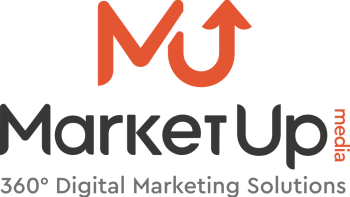
Social Media Ads vs. Google Ads
In today’s digital world, businesses face the challenge of choosing the right advertising platform to maximize their return on ad spend. The choice between Διαφημίσεις στα μέσα κοινωνικής δικτύωσης και Διαφημίσεις Google isn’t just about personal preference -it’s a strategic decision that directly affects how customers discover your business.
The dilemma “Social Media Ads vs. Google Ads: Which one should you use?” is on the mind of every business owner or marketing manager who wants to invest wisely in their ad budget.
Many companies find themselves spending money on ads but seeing little return.
The main reason? The platform they chose doesn’t match their audience -or the stage of the customer journey they’re targeting. Knowing the strengths, limitations, and strategies behind social media ads and Google Ads is key to avoiding wasted spend and achieving real results.
What are Social Media Ads?
Social media ads include platforms like Facebook, Instagram, LinkedIn, and TikTok.
These platforms allow highly targeted advertising based on demographics, interests, behaviors, and past interactions. Ads can come in many formats -image, video, carousel, or stories- and they give businesses creative ways to showcase their products or services.

The biggest advantage: precision targeting.
You can reach very specific communities and build brand awareness, while also encouraging engagement. This makes social media ads especially powerful for B2C businesses like retail stores, cafés, restaurants, or hotel chains that want direct interaction with customers.
The downside: people aren’t always actively looking to buy while scrolling on social media.
Purchase intent is often lower, and competition for attention is high. To succeed, you need standout, engaging content that cuts through the noise.
What are Google Ads?
Google Ads covers Google Search, the Display Network, YouTube, and Shopping ads.
The key difference compared to social ads is intent. Google Ads appear when users are actively searching for products or services. This means purchase intent is much higher, often resulting in a stronger ROI for businesses looking for direct conversions.
With Google Ads, results are measurable -you can track CPC, conversion rates, and ROI in real time. They’re a great fit for B2B companies or services with high purchase intent, like law firms, accounting agencies, or tech companies focused on lead generation.
The downside: costs per click can be higher in competitive industries, and campaigns require constant optimization. Still, the targeting accuracy and measurable performance make Google Ads essential for businesses that want consistent conversions.
Social Media Ads vs. Google Ads: Strengths & Weaknesses
- Διαφημίσεις στα μέσα κοινωνικής δικτύωσης: best for building awareness, reaching new audiences, and engaging with customers. Great for storytelling and brand visibility, but immediate conversions may be limited.
- Διαφημίσεις Google: best for targeting users with strong buying intent. Perfect for driving sales or leads quickly, but requires ongoing monitoring and budget flexibility.
Το dilemma “Social Media Ads vs. Google Ads: Which one should you use?” comes back here -it’s all about matching the platform to your business goals.
Which businesses benefit from each platform?
B2C businesses (cafés, restaurants, clothing shops): Social media ads excel here by targeting specific demographics with creative and engaging content.
B2B businesses or high-intent services (software companies, legal or accounting services): Google Ads works best by targeting users who are actively searching and ready to convert.
For many businesses, the smartest strategy is to combine both:
- Use social media ads for awareness and audience building.
- Use Google Ads for conversions and retargeting.
That way, you cover the whole customer journey -from discovery to purchase.
Have in mind
One of the most important points in comparing Social Media Ads to Google Ads is the issue of cost and return on investment. In general, social media platforms offer lower cost per thousand impressions (CPM), while Google Ads, especially in search, can have a higher cost per click (CPC). This does not necessarily mean that Google Ads are less effective; on the contrary, due to the purchase intent that users have, the probability of conversion is higher, so the ROI can be higher.
For example, a dentist in Athens running an ad on Google Search for “teeth cleaning Athens” will have a much more higher probability of receiving a call or online booking, compared to a targeted Facebook ad that addresses an audience based on interest in “oral care”. Conversely, a clothing store may see better performance from social media ads, as users are attracted to visual content and purchase intent is created through interaction with the brand. A proper understanding of the costs and ROI for each platform is essential for businesses to allocate their budget more strategically.

The digital advertising landscape is constantly evolving, and the choice between social media ads and Google Ads should not be considered static. Businesses that want to maintain a competitive advantage must monitor trends. In the social media space, video-first content (especially through platforms like TikTok and Instagram Reels) has exploded in popularity, which gives businesses new opportunities to create ads with strong emotional appeal and viral visibility.
On the other hand, Google is constantly investing in improving machine learning and automation capabilities through Performance Max, giving businesses more tools to maximize results with less manual optimization and more precise audience targeting. So, the real question is not just Social Media Ads vs. Google Ads: Which one should you use?
But how can the two strategies work together, adapting to future changes in digital marketing? Businesses that embrace innovation and adopt hybrid strategies are more likely to stand out, reduce cost per customer acquisition, and strengthen brand loyalty. The future belongs to those who understand that platforms are not competitive but complementary, creating a display ecosystem that covers every stage of the customer journey, from awareness to final purchase.
Smart strategies to combine both
A practical approach is to run social media ads to reach new audiences, then use Google Ads to convert interest into sales. With analytics and tracking, you can measure ROI, optimize campaigns, and improve conversion rates.
For example:
- A retail store might run Instagram ads for brand awareness.
- At the same time, they use Google Search ads to capture users actively looking for their products online.
This way, brand awareness feeds into direct sales. Retargeting is key too: users who interact with social media ads but don’t buy can be retargeted with Google Ads -boosting chances of conversion.
Συμπερασματικά
The choice between social media ads and Google Ads should be based on your goals, audience, and budget.
Social media ads: great for brand awareness and engagement.
Διαφημίσεις Google: great for direct conversions and leads.
The question “Social Media Ads vs. Google Ads: Which one should you use?” highlights the importance of making a strategic choice. Businesses that carefully evaluate their needs, combine platforms when appropriate, and constantly monitor results achieve better ROI, stronger conversions, and maximize their ad budget.
With the right strategy, measurement, and optimization, investing in paid campaigns becomes not just effective -but essential.











